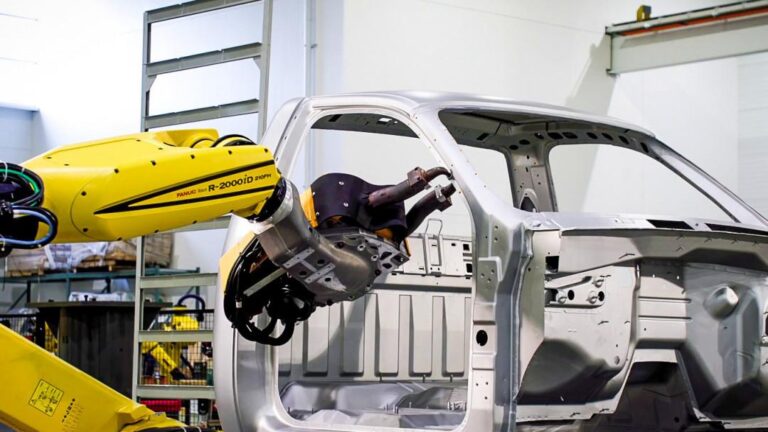Japan’s automotive sector has marked a significant milestone with the highest number of robot installations in five years, underscoring a renewed emphasis on automation and advanced manufacturing technologies. According to recent data from AI Insider, this surge reflects the industry’s strategic push to boost productivity, address labor shortages, and enhance production efficiency amid evolving market demands. As global competition intensifies, Japan’s car manufacturers are increasingly leveraging robotic innovation to maintain their edge in the rapidly changing automotive landscape.
Japan’s Car Industry Leads Global Robot Adoption with Record Installations
Japan’s automotive sector is setting new standards in automation by achieving its highest level of robot installations in over five years. This surge is driven by a strategic push to enhance productivity and maintain competitiveness amid global supply chain disruptions. Manufacturers are increasingly integrating advanced robotic systems that perform tasks ranging from welding and painting to intricate assembly operations. Leading brands are investing heavily in AI-powered robots that not only boost efficiency but also improve quality and reduce workplace injuries.
Key factors contributing to this trend include:
- Technological Innovation: Adoption of collaborative robots (cobots) for flexible manufacturing lines.
- Government Support: Incentives and grants aimed at accelerating Industry 4.0 initiatives.
- Labor Challenges: Addressing workforce shortages and aging demographics through automation.
| Year | Robot Installations | Growth Rate |
|---|---|---|
| 2019 | 12,800 units | +3.5% |
| 2020 | 11,450 units | -10.5% |
| 2021 | 13,300 units | +16.2% |
| 2022 | 14,900 units | +12.0% |
| 2023 | 17,200 units | +15.4% |
Analyzing the Impact of Automation on Manufacturing Efficiency and Workforce Dynamics
The surge in robot installations across Japan’s automotive sector is redefining the parameters of manufacturing efficiency. Advanced automation has led to significant reductions in production cycle times and improved consistency in product quality. Manufacturers report that integrating AI-driven robotics has optimized assembly line throughput by over 30% in just the past two years. This leap not only boosts output but also minimizes human error, reinforcing Japan’s competitive edge in precision engineering and innovation.
However, the shift towards automation is also reshaping workforce dynamics profoundly. While some traditional roles are diminishing, new opportunities are emerging in robot maintenance, programming, and systems management. The evolving landscape calls for upskilling initiatives focused on digital literacy and technical expertise. Below is a snapshot of workforce impact in leading Japanese car manufacturing hubs:
| City | Jobs Reduced (%) | New Tech Roles Created (%) | Training Programs Launched |
|---|---|---|---|
| Nagoya | 18 | 22 | 15 |
| Kyushu | 14 | 19 | 10 |
| Shizuoka | 20 | 25 | 12 |
- Efficiency gains: Enhanced automation reduces manual labor demands and operational costs.
- Workforce transformation: Necessity for continuous reskilling programs to prepare employees for innovative roles.
- Industry outlook: Collaborative human-robot environments foster greater productivity and job satisfaction.
Strategic Recommendations for Integrating AI and Robotics to Sustain Competitive Advantage
To secure a long-lasting edge in the fiercely competitive automotive landscape, Japanese manufacturers must prioritize the seamless integration of AI and robotics across all production phases. This includes leveraging machine learning algorithms for predictive maintenance to reduce downtime, while employing collaborative robots (cobots) to enhance precision without sacrificing flexibility. Emphasis on workforce upskilling is equally critical; empowering employees to work alongside intelligent machines fosters innovation and boosts operational efficiency.
Key strategies for successful integration include:
- Implementing real-time data analytics platforms to optimize assembly line workflows
- Adopting scalable AI solutions that evolve with changing market demands
- Promoting cross-functional teams combining robotics experts and production engineers
- Establishing partnerships with tech startups for cutting-edge automation tools
| Focus Area | Recommended Action | Expected Impact |
|---|---|---|
| AI-Driven Analytics | Deploy predictive quality control systems | Reduce defects by 20% |
| Robotics Collaboration | Integrate cobots for complex assembly tasks | Increase production speed by 15% |
| Workforce Development | Continuous training on AI-robotics synergy | Improve worker-machine productivity |
Insights and Conclusions
As Japan’s car industry continues to lead in robot installations, the integration of advanced automation signals a transformative shift in manufacturing practices. This surge not only underscores Japan’s commitment to maintaining its competitive edge amid global challenges but also highlights the evolving role of AI and robotics in shaping the future of automotive production. Stakeholders across the industry will be closely watching how these developments influence productivity, labor dynamics, and innovation in the years to come.




